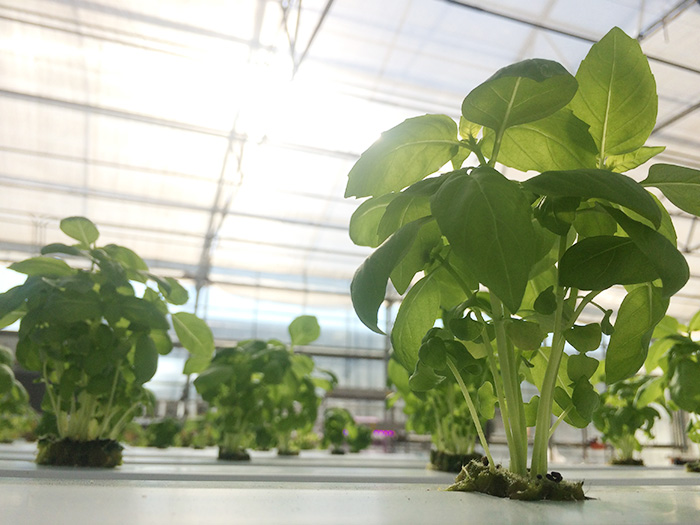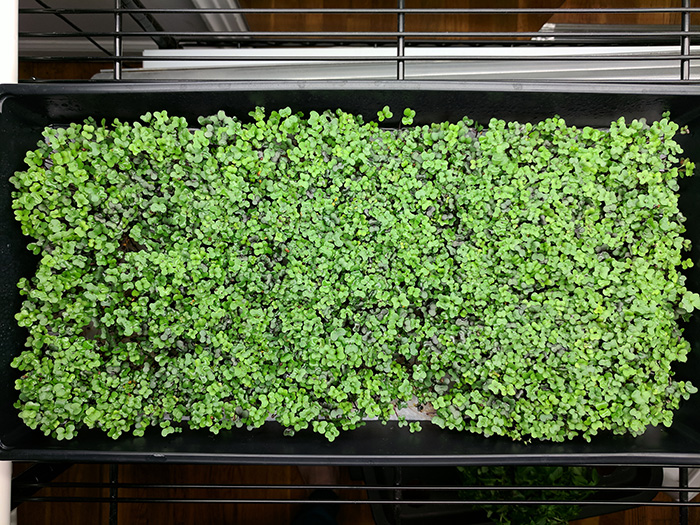The use of supplemental light to control downy mildew on food and ornamental crops could be integrated into current disease management practices.
Downy mildew is a major disease on both ornamental and food crops. Whether these crops are grown outdoors or in a controlled environment, environmental conditions, generally cool to moderate temperatures and high humidity, are favorable to downy mildew development. Warm temperatures and high humidity are conducive to powdery mildew development.
Researchers at the Lighting Research Center (LRC) at Rensselaer Polytechnic Institute, Cornell University, University of Florida, Norway’s Institute of Bioeconomy Research and the Norwegian University of Life Sciences are studying the impact different light wavelengths, light amount, light durations and light application timing can have on the development of the pathogens that cause downy mildew and powdery mildew.

Photo courtesy of Tyler Baras
Jaimin Patel, a plant pathologist at LRC in Troy, N.Y., is studying the effects light doses (wavelengths, amount, duration and application time) under LED fixtures can have on the control of these diseases. Patel is currently conducting research on the impact light can have on the development of downy mildew and powdery mildew on specialty crops.
“Each downy mildew pathogen could have a different sensitivity to visible spectrum light,” Patel said. “Some downy mildew pathogens could be more sensitive to shorter wavelengths while others could be more sensitive to longer wavelengths.”
Stopping downy mildew
LRC researchers are evaluating the spectral sensitivity of basil downy mildew.
“Suppression depends on the dose of visible spectrum whether or not LEDs are going to be effective at controlling the pathogen,” Patel said. “The light dose relates to the wavelength, light amount, how long the pathogen is exposed to the wavelength and light application timing.”
How long growers would have to light their plants at night depends on the season. In those seasons with shorter day lengths, growers would have to light for a longer period of time at night.
“Growers wanting to reduce the impact of basil downy mildew should avoid prolonged dark periods and high humidity,” Patel said. “Nights of high humidity and cool to moderate temperatures (50ºF-85ºF) are conducive to the development of downy mildew. If the proper nighttime lighting conditions and other environmental conditions are maintained, the pathogen can be suppressed. More than 85 percent humidity at night is conducive to the sporulation of the downy mildew pathogen.
“This is a nighttime light treatment. That’s when the pathogen is sporulating. So trying to avoid the dark is going to have a large impact on the pathogen. But the spectrum and amount are equally important. If an effective dose is not used, sporulation will still occur even if the lights are on all night. We are currently conducting research to determine the optimum light dose.”

Photo courtesy of Jaimin Patel, Lighting Research Center
Patel said lighting manufacturers probably won’t know how much light to apply to control the disease because they don’t necessarily have that information.
“Some growers may want to use trial and error to determine if the lights are effective,” he said. “But as more research is published and lighting manufacturers become aware of research results, there may be a change as to how manufacturers promote their fixtures and inform the growers how to use the lights to suppress disease. That is why we are doing the research so that it can benefit both growers and the lighting manufacturers.”
Red light benefits to basil, other crops
Patel said the red light that has been found to control basil downy mildew also has a positive effect on the basil plants.
“Exposing basil to red light at night also increases the number of leaves and the leaf size, but it also makes the stems longer,” he said. “We wanted to be sure using the light didn’t negatively affect the plant habit so that they are still commercially salable.”

Photo courtesy of Jaimin Patel, Lighting Research Center
Patel said LRC researchers will be looking at other vegetable crops in regards to controlling powdery mildew and downy mildew with light. Summer squash is also grown in New York and some varieties are susceptible to powdery mildew and downy mildew. Plans are to treat squash plants with a dose of ultraviolet (UV-C) light to determine if it has an effect on the pathogens.
For more: Jaimin Patel, Rensselaer Polytechnic Institute, Lighting Research Center; (518) 687-7168; patelj6@rpi.edu; https://www.lrc.rpi.edu/programs/plants/plants_home.html.
Jaimin Patel and Leora Radetsky did a presentation “Night and day: Controlling plant diseases with light” at Cultivate’18 in Columbus, Ohio.
This article is property of Hort Americas and was written by David Kuack, a freelance technical writer in Fort Worth, TX.






